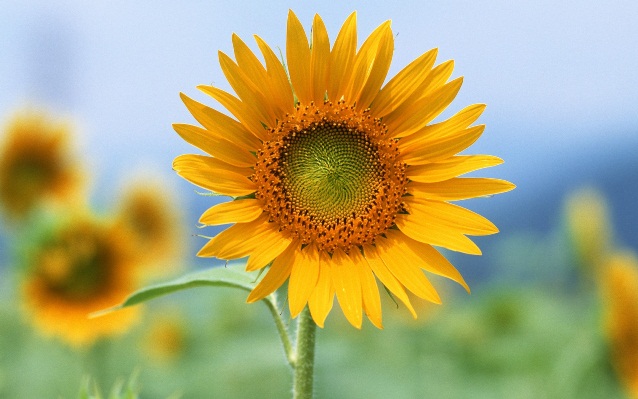Sunflowers bloom in summer.
The simple present (or present simple tense) expresses an action in the present taking place once, never or several times. It is also used for actions that take place one after another and for actions that are set by a timetable or schedule. The simple present also expresses facts in the present.
I. How do we make the Simple Present Tense?
Affirmative: Subject + Verb(s/es)
Negative: Subject + do/does not + Verb
Question: Do/Does + Subject + Verb?
There are three important exceptions:
1. For positive sentences, we do not normally use the auxiliary.
I go shopping at Walmart every weekend.
2. For the 3rd person singular (he, she, it), we add -s to the main verb or -es to the auxiliary.
He works at a factory
He goes to work at 8 o’clock
3. For the verb to be, we do not use an auxiliary, even for questions and negatives.
I am a teacher.
He isn’t a bad personIs she beautiful?
Look at these examples with the main verb like:
I have a dog.
He gets up at 6.00 am every morning.
It takes me 20 minutes to get to work.
She does her homework correctly.
They finish the football match at 5.00pm in the afternoon.
We never go to the zoo on Monday.
II. Use of Present Simple
Present Simple is used for states, things staying the same, facts and things that are true for a long time
Example:
The sun rises in the east.
Flowers usually bloom in spring.
Present Simple is used for repeated actions
Example:
We come here every week.
He plays golf at the weekend.
We use Present Simple to talk about future (usually in schedule, plans…)
The train starts at 18 o’clock today.
The exhibition finishes next week.
III. Positive Forms
I/you/we/they get up at 6.00.
He/she/it gets up at 6.00
In present simple we use the verb without an ending
I get the lunch ready at one o’clock, usually
Most children like ice-cream
We always do our shopping at the supermarket near our office.
You know the answer
But in the third person singular (after he, she, it, your friend, John, etc), the verb ends in -s or -es.
It gets busy at weekends
Sarah catches the early train.
My husband thinks different, too
She faxes messages all over the world.
IV. Negatives and Questions
Negative
I/you/we/they do not get or don’t get
he/she/it does not get or doesn’t get
Question
Do I/you/we/they get?
Does he/she/it get?
We use a form of do in negatives and questions. We use do and don’t except in the third person singular, where we use does and doesn’t
We don’t live far away
Do you live here?
He doesn’t want to go shopping
What does he want?
We don’t add -s to the verb in negatives and questions
He doesn’t gets a book. (wrong)
He doesn’t get a book (correct)
Does he gets a book? (wrong)
Does he get a book? (correct)
[WpProQuiz 1]

Great sir! add more use of present simple
He get up at 6.00 am every morning. Is it true? 🤔